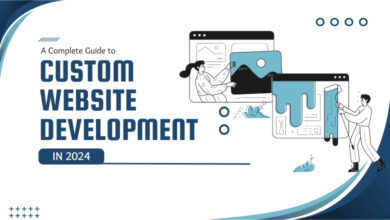How Users Think and Behave on a Website?

Web design and SEO services in Melbourne work hard to bring a website to new customers through organic and paid methods. Many think this is the end goal, but that’s not always the case. The top goal is to create a user experience that engages, entertains, and educates your audience, increasing their chances of returning to the website.
To create such a user experience, one should first understand how an average user thinks and behaves on a website. Generally, this is not much different from how one behaves in a physical store.
So, here’s a small guide to the top user behaviours on websites. Knowing these means creating a well-functioning website.
Users Want Quality and Credibility
You may think how your website looks is the most important factor for a user. But contrarily, they expect quality and credibility first.
For example, when your website offers high-quality and supremely valuable content, your users don’t mind a few advertisements in between. They would even care less about the design of the site.
So, you need not worry if you have a less-than-expected budget for hiring a design team. You can simply focus on the content and value you provide.
Users Scan First and Read Later
You may do it yourself; observe next time.
When a user enters your web page, the first thing they are inclined to do is scan the entire page. This gives them a brief idea about what your page consists of, your services/products, and the quality of it all.
During this brief analysis, your user searches for some fixed anchors on the page, which can guide them through. These anchors could be visual cues, headings, or highlighted keywords that tell the user if your site is relevant to their needs.
Some things that users take quick notice of are:
- Bullet points
- Headings
- Text next to an image
- Links and buttons
- Call to action (CTA)
Users Want Clear Navigation Menu
One most common user behaviour on a website is scoping out the navigation menu. It tells the user what about your page is important. Some users even click on each page tab to learn more about you.
For instance, if you have no products tab on your navigation menu, the user understands that you don’t offer any products, only services. This is the speediest way to communicate what you do and don’t.
Users Expect to Be Educated
Once users understand your website enough, they will try to sign up for your products or services. And on the product or service page, they expect to know more about your offers. So, leaving this section empty with a subpar web form is a terrible idea. An empty page even affects your credibility.
Insert useful content here with essential details about your service:
- What does the service include?
- Do you provide any coupons at the moment?
- How does your product or service help the user achieve their goals?
So on and so forth. Simply make sure to convey everything the user may want to know about your service.
Users Look for Search Icon
No matter how simple a website might be, most users use a search tab to find products and services they want. It paces up their user journey and increases user satisfaction. So, the placement of the search icon must be optimal.
Usually, it is easier to find the search box when it is in the top-right corner of a website. Placing it at the bottom of a home page is not an ideal decision.
Users Need Trust Signals
The common objectives of websites are buying a product, hiring a service, or obtaining information. All these require the user to submit confidential data, such as email address, credit card info, address, etc.
That is why users look for trust signals before they become customers. These signals can be:
- A security badge
- Customer reviews
- Ratings
- Secure payment options
- Trusted affiliations
Websites that display these trust signals instil confidence in users to go ahead in their journey. For example, users may hesitate to pay on a website without an SSL certificate.
Users Tend to Compare
One of the most common human tendencies is comparison. It is particularly true when you are making a purchase decision. You compare two different options to see which one suits you best.
Your users do the same with your website. They visit your competitors’ websites, compare products and prices, and decide who wins. It is unavoidable, but the solution is simple. Make your website embrace this user behaviour by offering comparison tools directly on your website itself. Amazon is one great example here.
Further, you can also incorporate expert opinions, buying guides, visual content about your product, and product filtering option.
Final Thoughts
User behaviour is a significant area to study in web design. Experts spend so much time on this, as it helps create websites that enable the best user experience possible. As a reference point, you can even observe your own thoughts and behaviour while interacting with a website.
Last but not least, consider hiring an experienced web design service in Sydney. Web development is a vast area with many speciality branches, so try to find the best source of help.
Make My Website is who we recommend for everything related to websites. The experts at MMW have undertaken many exciting projects, and you can take advantage of all that experience. Those projects are displayed on their website, assuring you enough about their expertise.
“Curious to learn more? Check out our website for further insights.”





